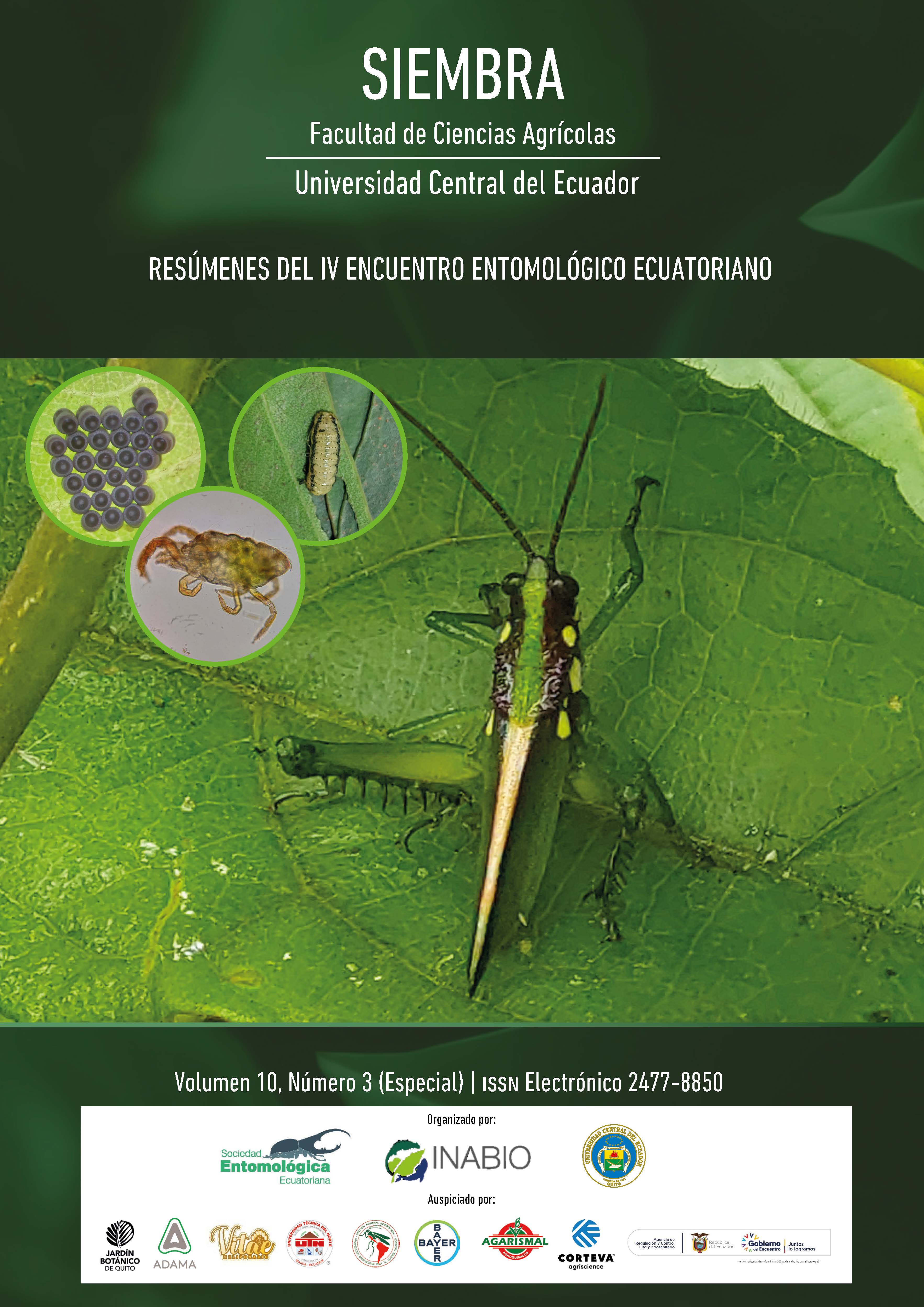ED018. Diagnosis of striped butterflies (Papilionoidea) using iNaturalist in Ecuador
Main Article Content
Abstract
Developing biological checklists as complementary tools for the development and support of monitoring programs and management plans is essential to generate awareness aiming at conservation. Butterflies constitute an essential bioindicator group for determining the state of conservation of environments. Diurnal butterflies (Papilionoidea), in this sense, could be a good indicator based on the observations of this group uploaded to the iNaturalist platform due to their relatively easy identification, given mainly by the color pattern of their wings. This analysis sought to evaluate the power of citizen science as an alternative and complementary source for the generation of diurnal butterfly’s checklists. Species accumulation curves were used to estimate the progress status of these checklists on the platform. It was found that the checklists of protected areas such as Yasuní National Park and Cuyabeno Faunistic Reserve have information gaps on the platform despite their high biodiversity. The difference may lie in technological limitations that prevent the correct use of the platform and a waste of its real capacity. In addition, a notable difference was evidenced in the number of observations loaded for this taxon versus the number of observations loaded with research grade, for which a greater effort to curate observations by the community of specialists is recommended. This analysis points to collaborate in the elaboration of diurnal butterfly identification guides in the future, as well as contributing to long-term monitoring programs with the active participation of citizens.
Downloads
Metrics
Article Details

This work is licensed under a Creative Commons Attribution-NonCommercial 4.0 International License.
The authors who publish in Siembra know and accept the following conditions:
- Authors retain the copyright and grant Siembra the right of first publication of the work, under the Creative Commons Attribution License. Third parties are allowed to use what has been published as long as they refer to the author or authors of the work and its publication in this journal.
![]() This content is licensed under a Creative Commons Attribution-Noncommercial 4.0 International (CC BY-NC 4.0).
This content is licensed under a Creative Commons Attribution-Noncommercial 4.0 International (CC BY-NC 4.0).
- Authors maintain the copyright and guarantee Siembra the right to publish the manuscript through the channels it considers appropriate.
- Authors may establish on their own additional agreements for the non-exclusive distribution of the version of the work published in Siembra, acknowledging their initial publication in the same, such as in institutional repositories.
- Authors are authorized to disseminate their work electronically once the manuscript is accepted for publication.

